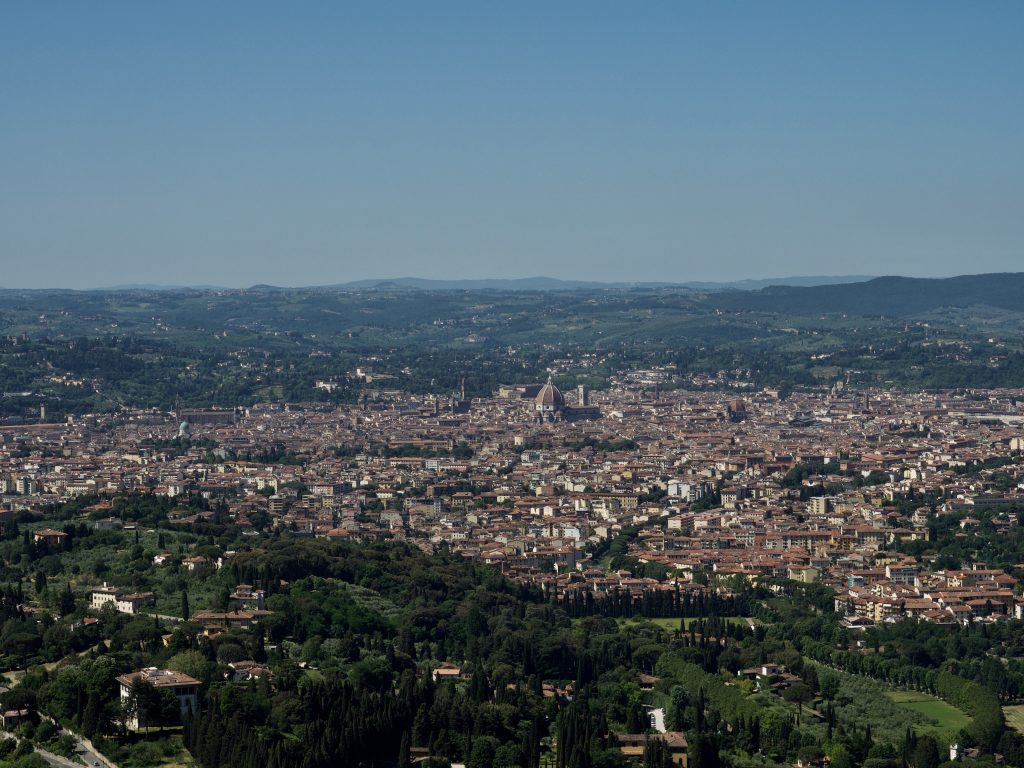
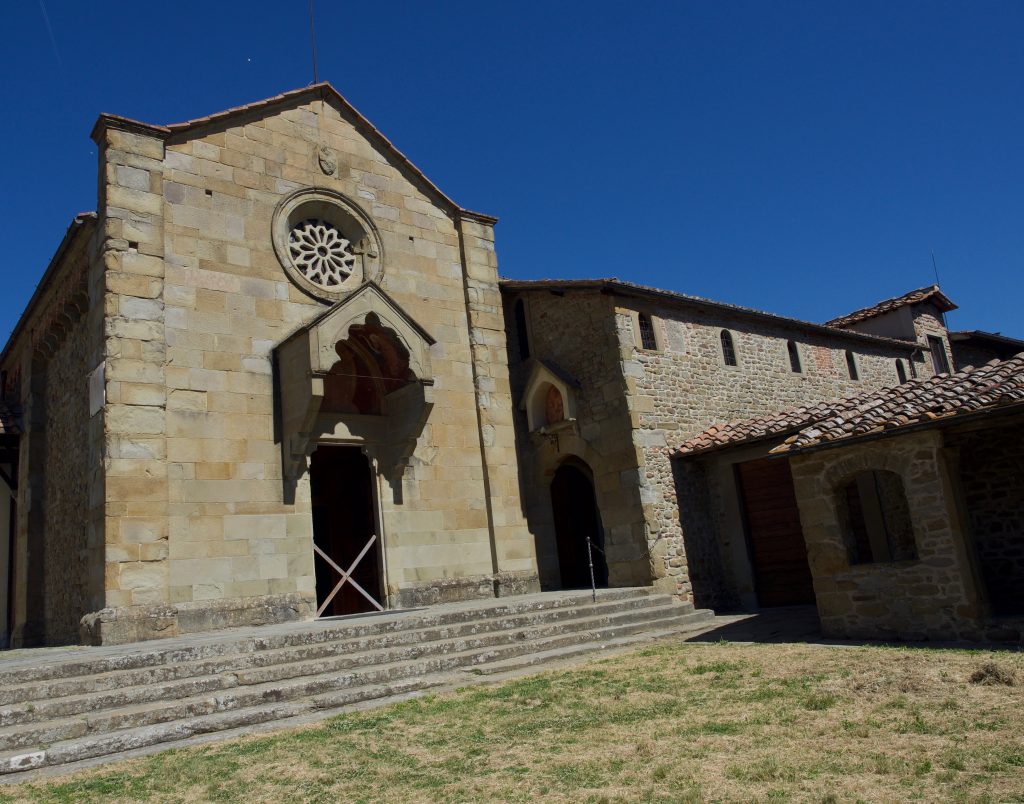
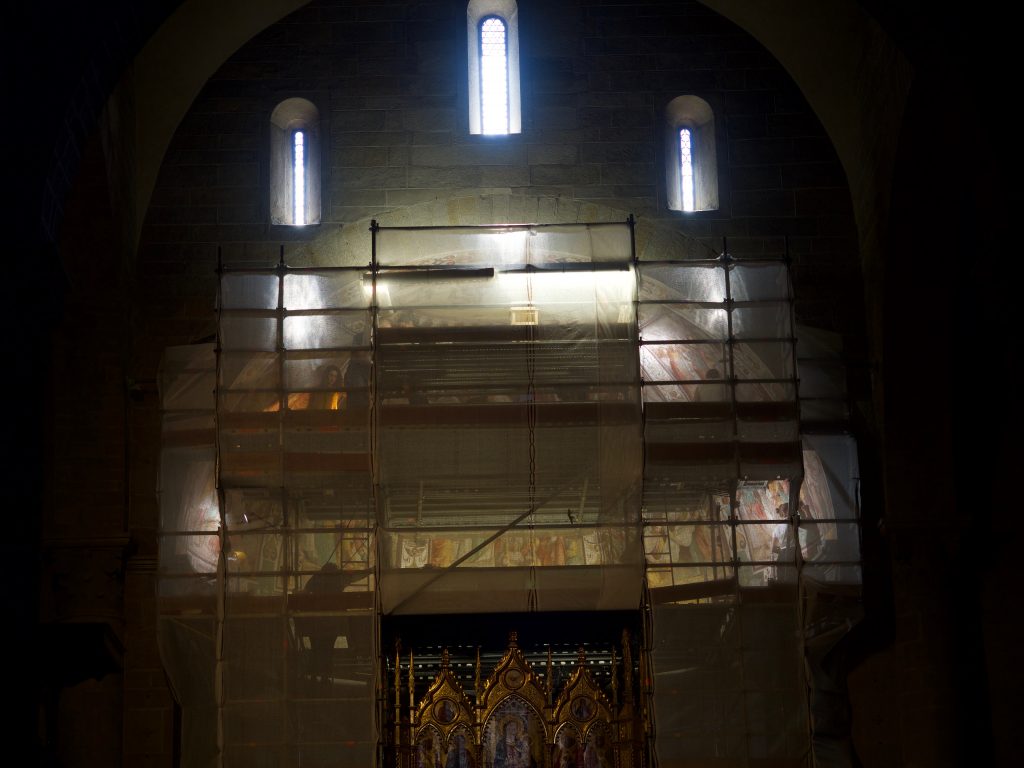
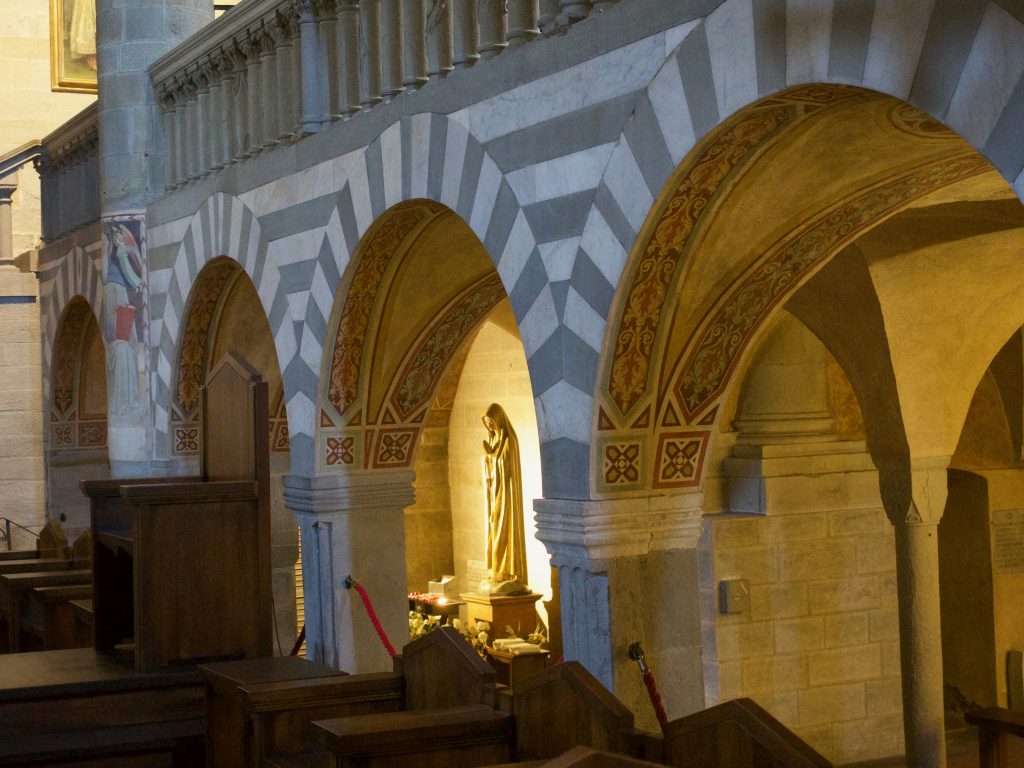
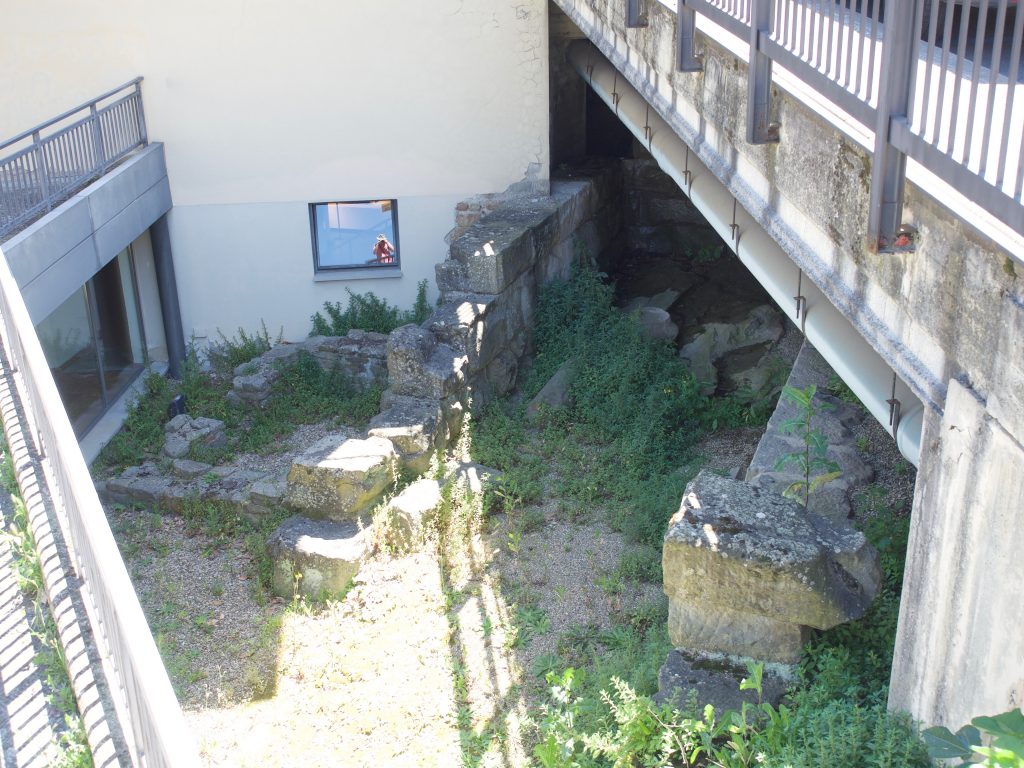
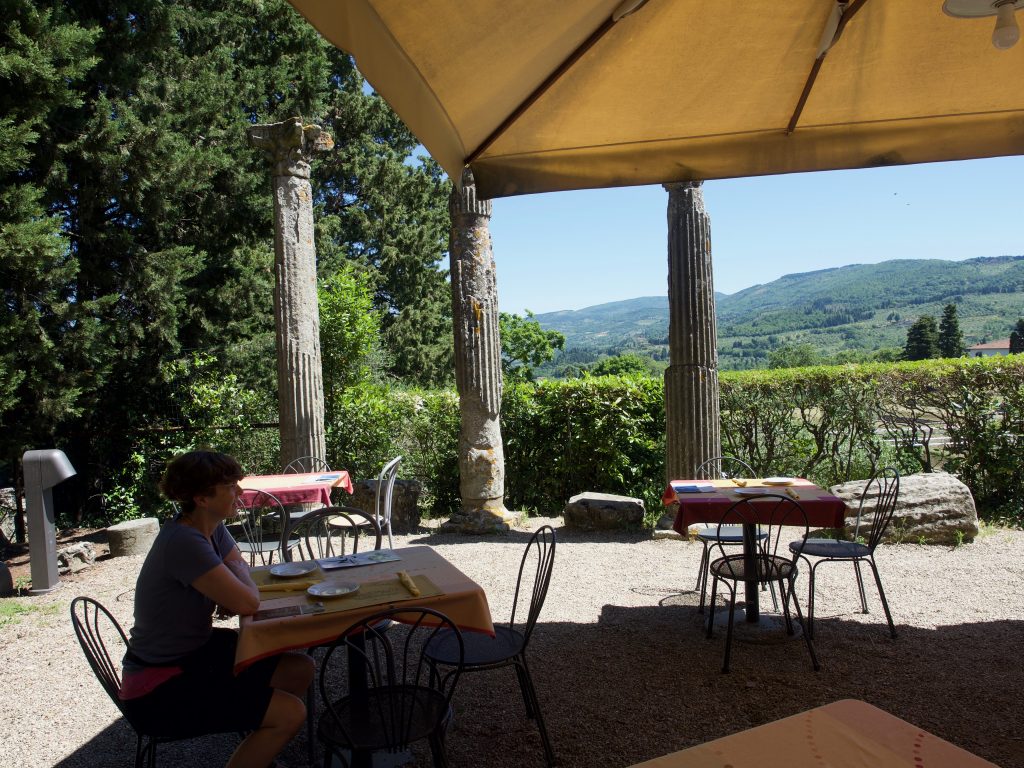
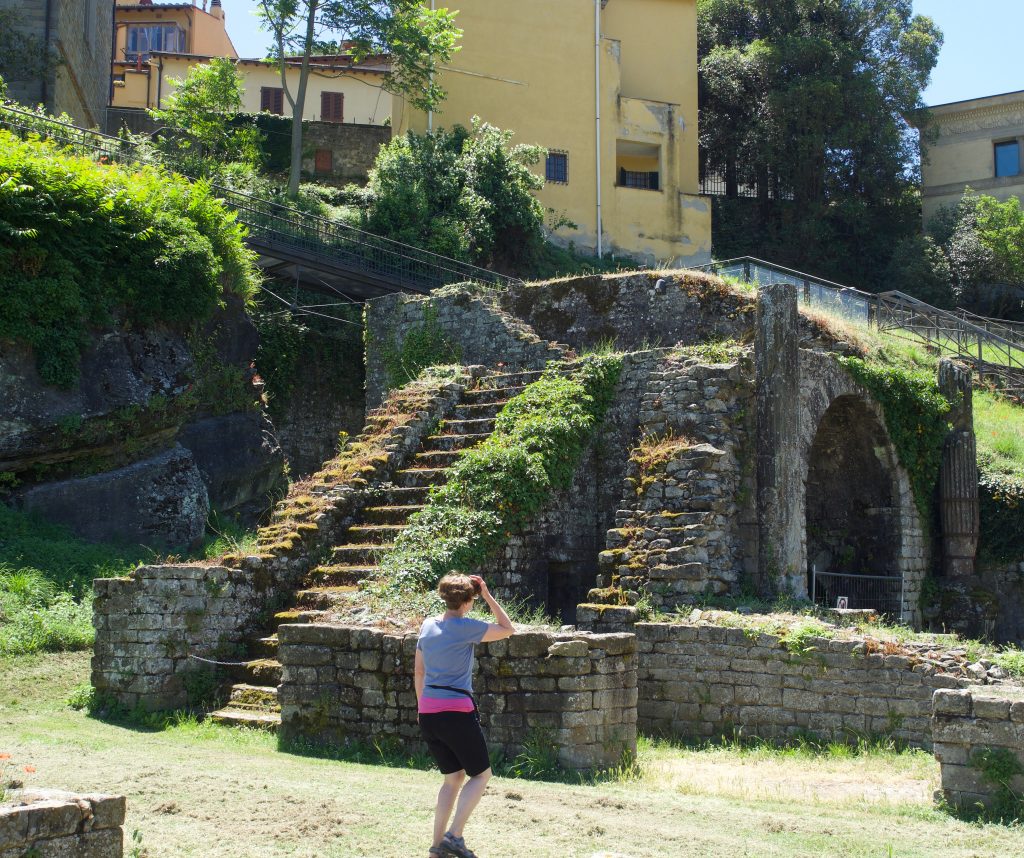
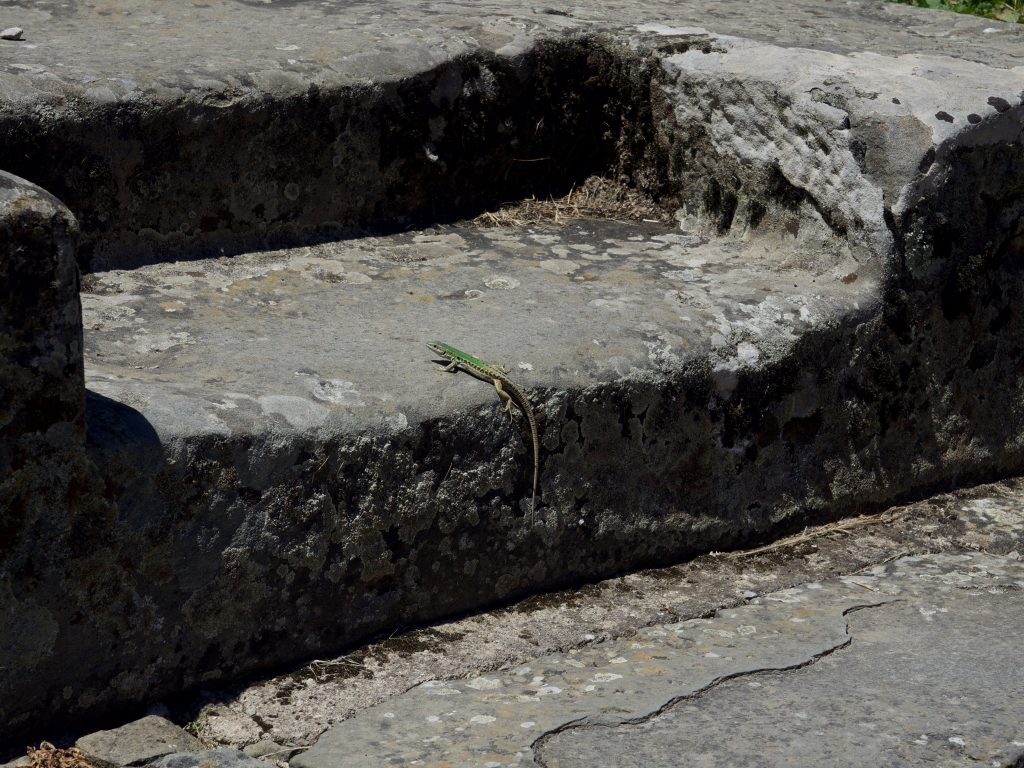
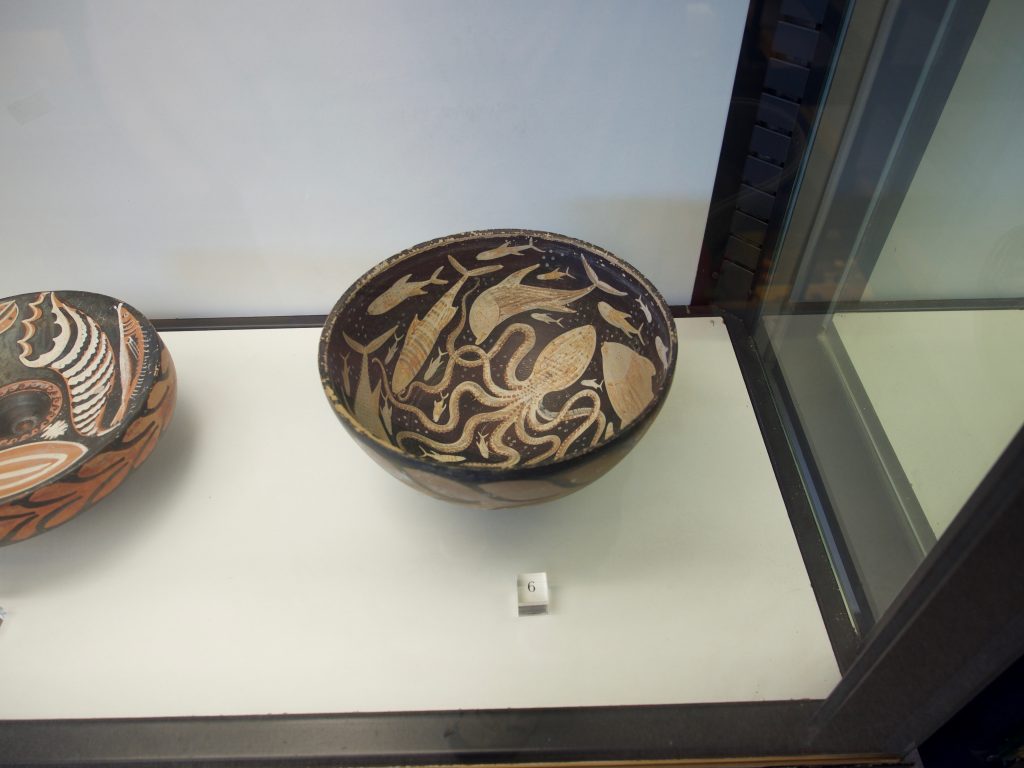
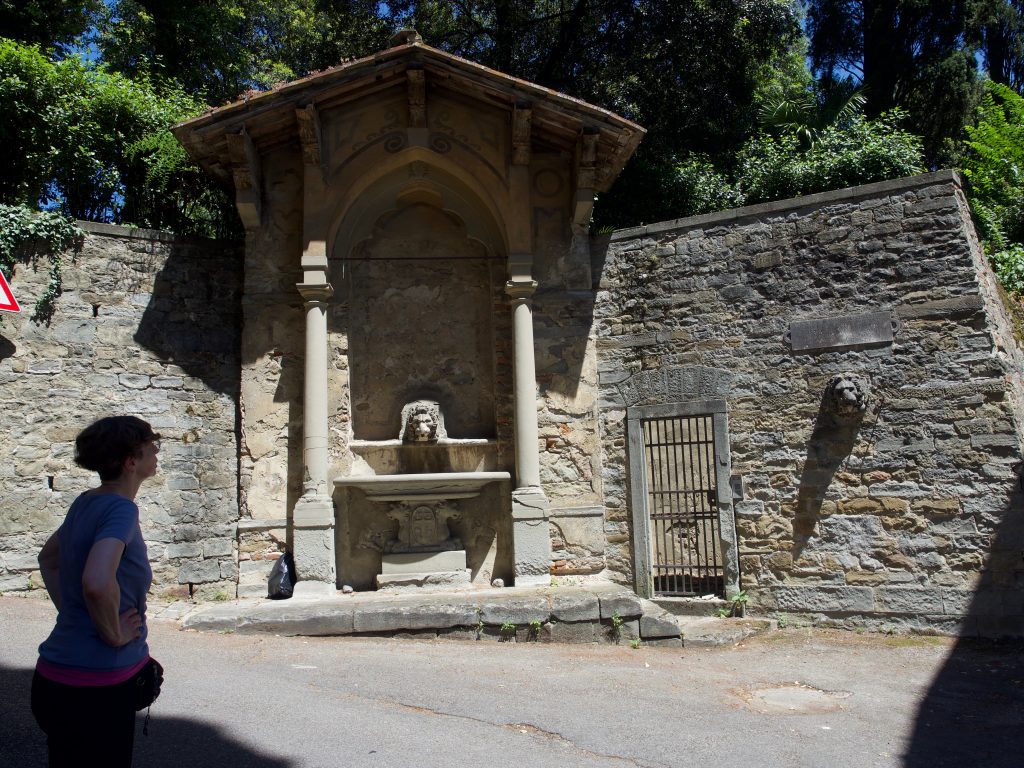
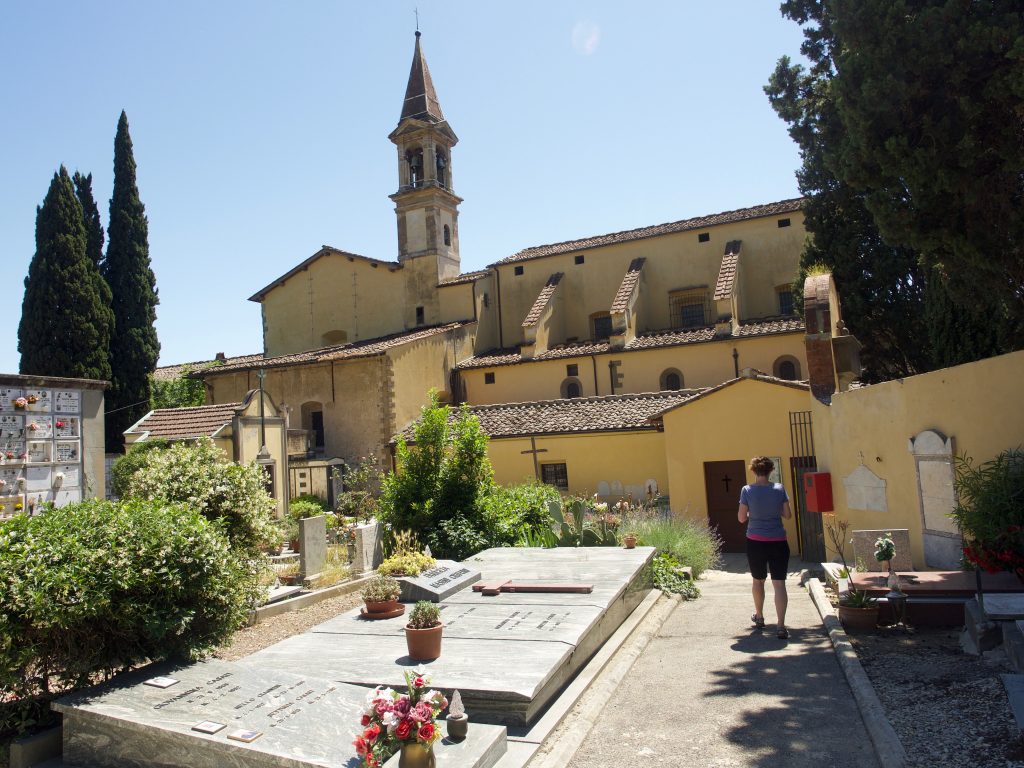
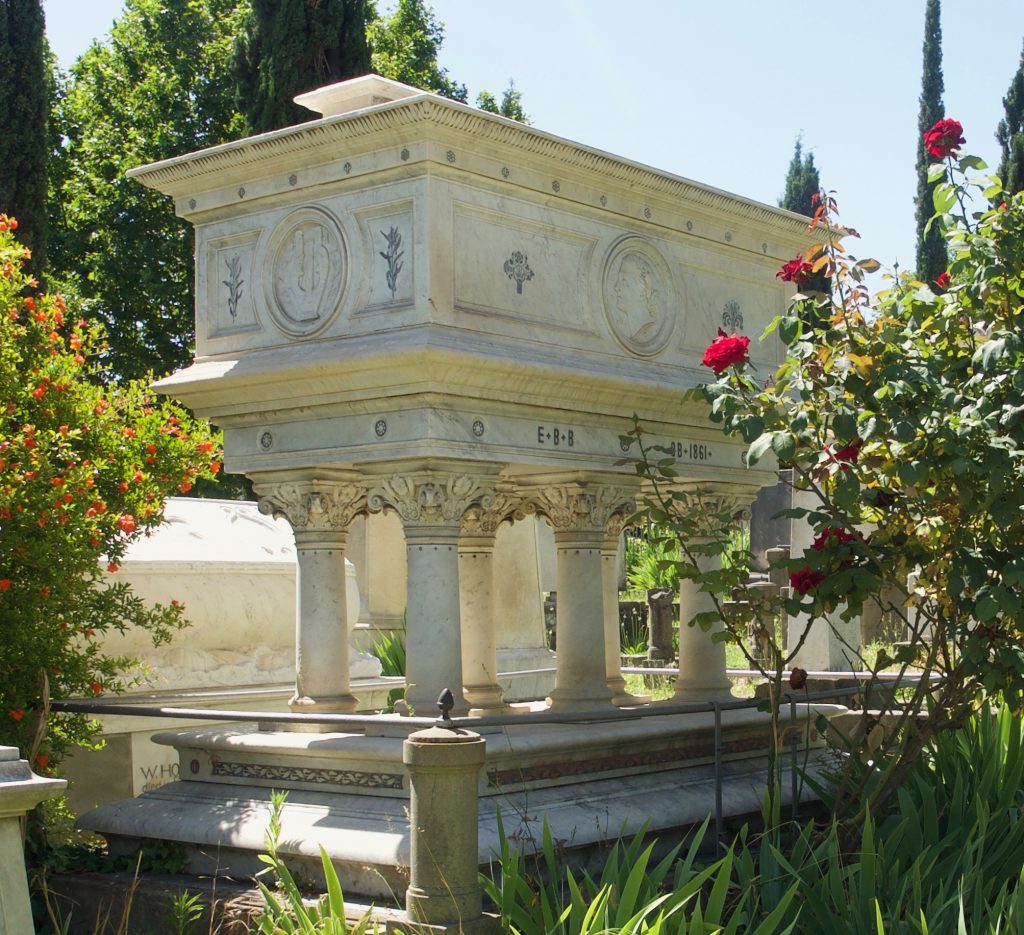
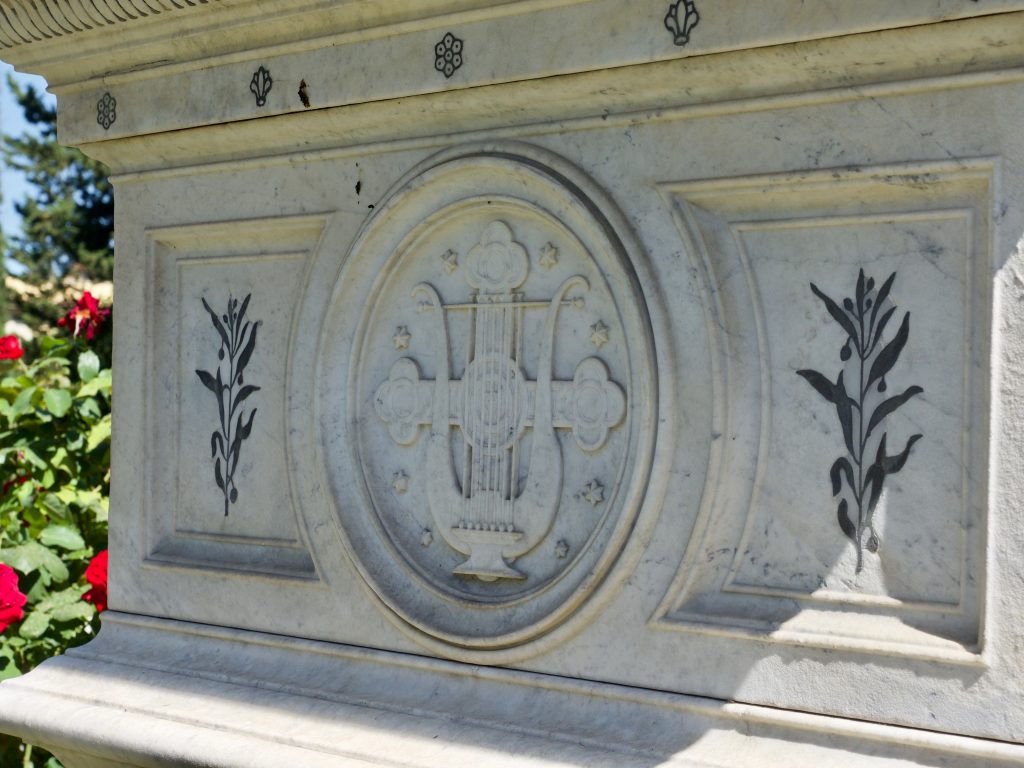
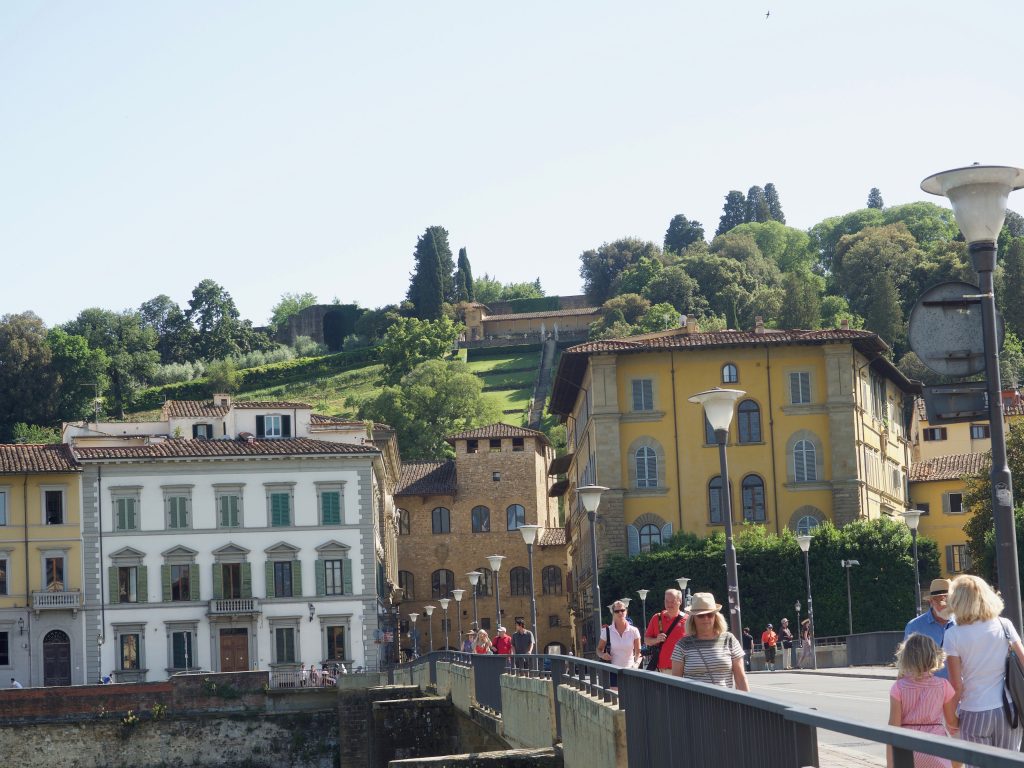
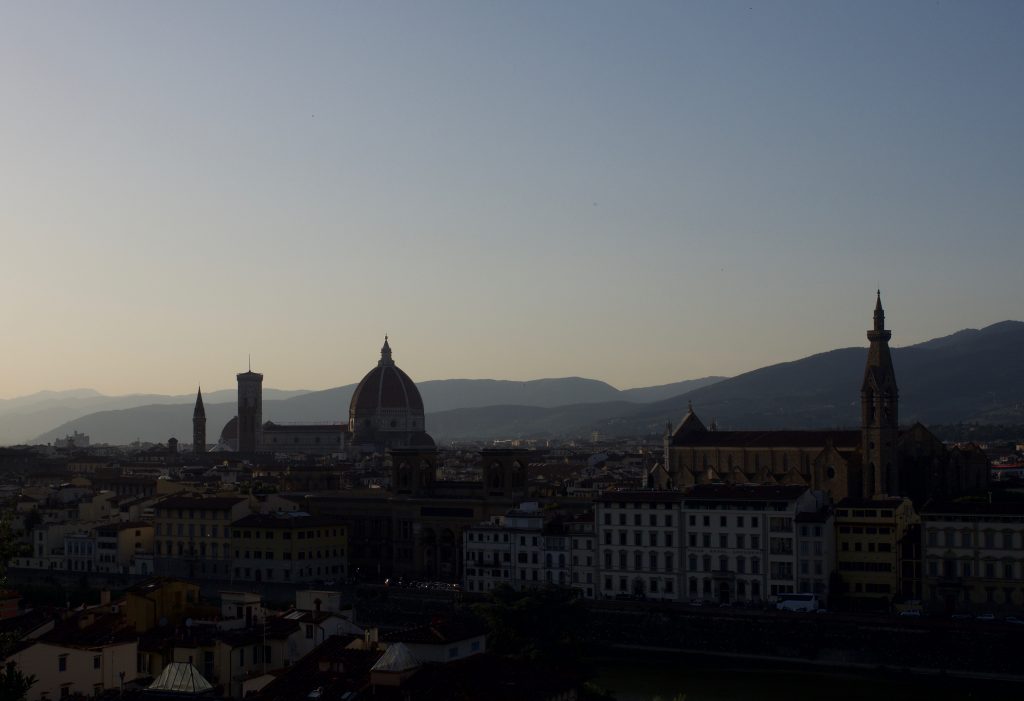
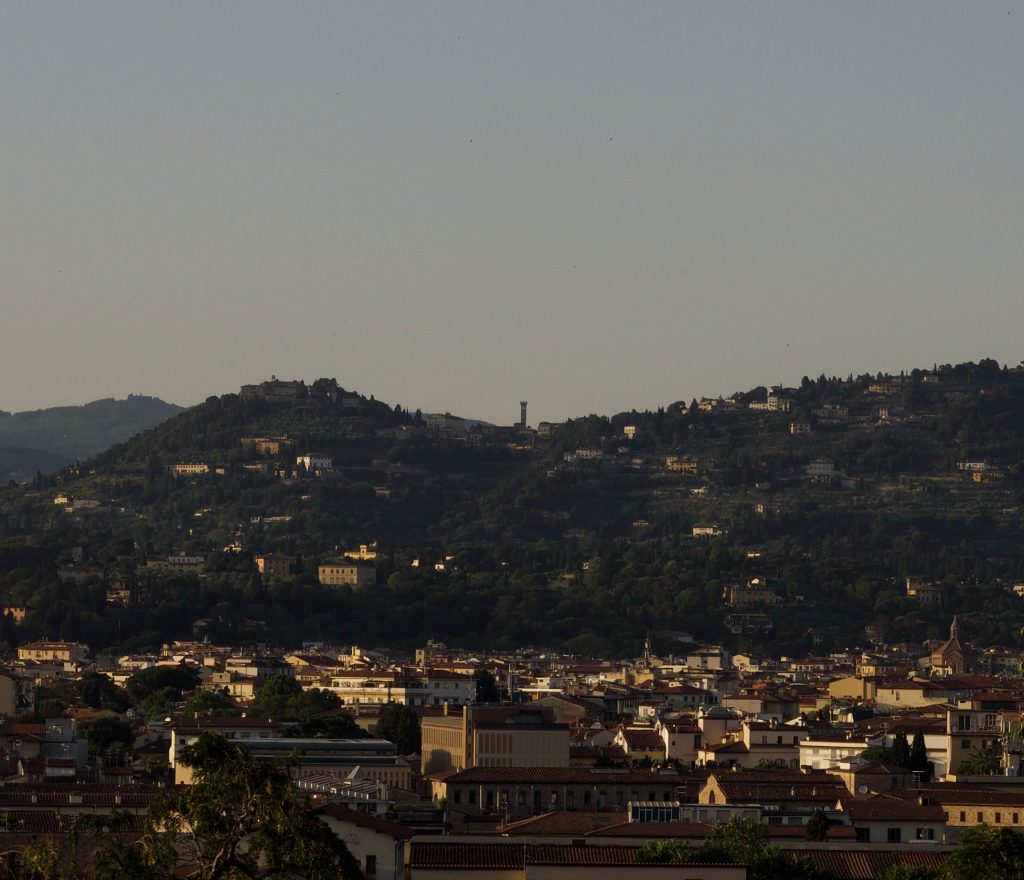
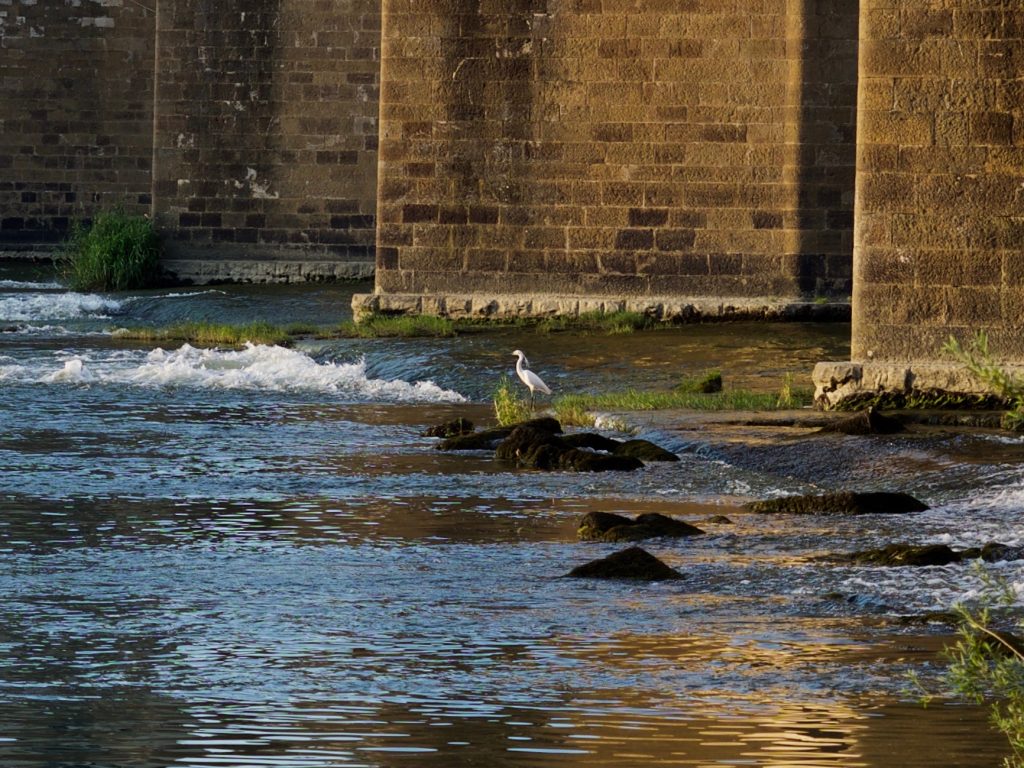
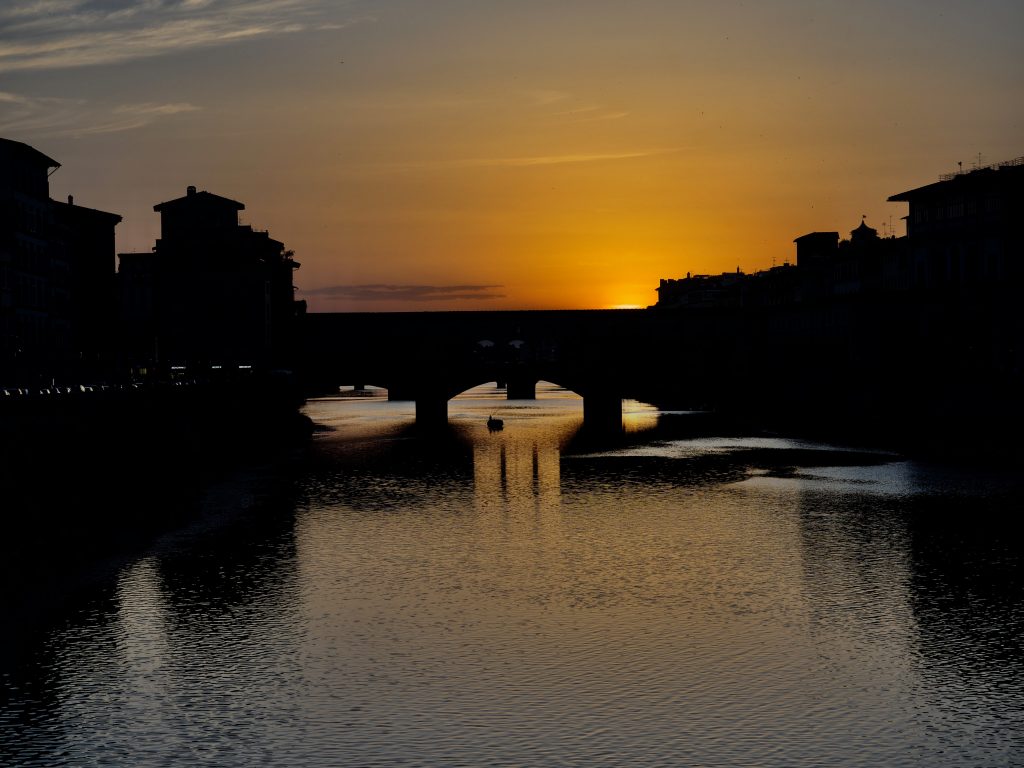
This was our day to explore the outskirts of Florence. We had settled on Fiesole, in the hills north of Florence, for two main reasons. Number One: everyone in the 19th century, including George Eliot, went there to see the view of Florence from afar—it’s of course also where the tourist party goes in Forster’s Room with a View. And even in the Renaissance, the wealthy went there to be away from town in the country, and the Medici had a villa there; in fact, even today, it is apparently the most expensive and fancy out-of-town suburb in the region in terms of real estate and per-capita income of the 15,000 or so inhabitants. Number Two: Our archeologist friends Rebecca and Chris had pointed out that it is THE place to go to see any archeological excavations in the region. Not to mention that it is really very close by (5 km from downtown) and easy to reach by bus from the Northeast edge of downtown.
So we took off around 9 am and walked toward what used to be the big fort on the East side of town, the fortezza, now the site where many bus and tram lines cross. We found our bus (# 7) and got tickets to get there and back (which cost us a grand 6 euro for the 4 trips. It took about 20 minutes in a pretty crowded bus, but then only about 10 people getting off at the final bus stop in Fiesole were tourists (in fact, they were a Maymester group of 8 or so from Indiana University-South Bend), so it was very quiet and not touristy up there. We went to a tiny Franciscan monastery & church up the hill, and wandered around for a bit, mostly enjoying the fantastic view of all of Florence from high above in the hills. We then stopped in the teeny „cathedral“ in town, with some beautiful black-and-white arches under the altar and some restorers actively working on the frescoes behind the altar, and checked out a minor excavation of a Roman insula in the middle of town, before we went to the archeological area proper.
We started our time there with a lovely, simple lunch at the lovely museum cafe with tables in the garden overlooking the Roman theater below. Ravioli and Risotto and a lovely Tiramisu for dessert—a perfect start into the afternoon!
The excavation area was very cool to wander around in. Although there were Etruscans settled there long before then, Fiesole was founded by Romans around the same time as Florence was, and for a long time about the same size. But Florence conquered Fiesole in the 14th century and basically incorporated it. The Etruscans (sadly) didn‘t have tombs here, but there are remnants of a wall and a temple, which the Romans repurposed for their own temple, so that‘s a bit of a mix. The other Roman ruins, a theater and a bath, are fairly well-preserved, although parts had undergone a good bit of willful 19th-century reconstruction. It was fun to wander around and especially see the baths close-up, with a part-original, part-reconstructed portion of the thermal system and floor. In the museum that goes with the area, there were also some remnants of the wall reliefs and of statues from the bath and theater area, as well as some other finds from Etruscan and Roman times. Some were precisely dated, but others came from older collections that basically showed no provenance. So there was nothing really spectacular here, although the museum was an interesting finale to exploring the archeological area. Our favorite piece was a clay bowl of Etruscan rather than Greek origin with a beautiful image of an octopus in it.
We then wandered around a bit more, trying to find Fiesole‘s Villa Medici, a church that I had read about, and the Dominican monastery where Fra Angelico had lived, which was on the way back down from Fiesole. Some of the directions were a bit confusing, but ultimately, that didn‘t matter, because the walking paths were so amazing—walls on either side of it, then suddenly open vistas of Florence or of the hills to its north that we were in, with terraced gardens full of olive trees and old villas (the Villa Medici included, but we couldn‘t see it very well behind its tall walls), and just lots of gorgeous green landscape. So this was quite wonderful, and it didn‘t matter that the church I had read about was in a locked-up complex and could only be visited by appointment, and that the church of the Dominican monastery where Fra Angelico had lived was closed until 4 pm, and we weren‘t going to wait that long. We took a photo from the cemetery and that was good enough—and since the bus we had to catch went right by it, we didn‘t even walk back up to Fiesole.
We took the bus to as close to the Protestant Cemetery as we could and then walked there, so we were there just after 3 pm. This visit was another bit of Barrett-Browning fandom, although I made a point to visit a bunch of other graves based on the map that the helpful British nun/beguine (??) who was staffing the little guard house gave us: EBB, of course (with her grave designed by Frederick Leighton), and right next to her William Holman Hunt‘s first wife, Fanny, who died here in 1866 in childbirth, and for whom he sculpted a very coffin-y looking gravestone. And then several Trollopes (Theodosia and Frances) and Trollope servants, the poet Walter Savage Landor and a whole passel of Landors, and also Arthur Hugh Clough, whose name I remembered vaguely in connection with Oxford, and who, like EBB, died in 1861 in Florence, but of Malaria, having only been there for a short time. On the way out, though, I had the brilliant idea of asking the friendly woman at the gate, who seemed to know quite a bit about „her“ cemetery about a virtually unknown writer I had been doing research on, and for whom I didn‘t have a death date, although I did know that she had lived with her mother and sister in Florence in the late 19th century, Sara Georgina Godkin (she wrote a cheap little book on San Marco in the 1880s that I came across when researching the first women who wrote about the site after it became a museum). The name didn‘t ring a bell with her, but out of the blue, she said, „Let me check on my computer“—when I didn‘t think the little guardhouse stuffed with 3-ring binders could not possibly have such a newfangled object in it. She pulled up all three of them with death dates, because they were buried in another cemetery that started to „host“ Protestants, Allori Cemetery. And she printed them out for me! I won‘t have time to go see the graves, but what I really wanted, namely the actual death date for Georgina, I now had. We ended up talking about various British and American women who were able to do unusual things in Florence, and I could have spent a lot more time asking her about her research—she helped an art historian named Mary Richardson to research a black American sculptor named Edmonia Lewis, a friend of Frederick Douglass’, who worked in Florence and Rome and apparently sculpted a Cleopatra who is in the Smithsonian (and whom I am sure I‘ll come across in one of the books about British and American expat women I have sitting at home). But there were other people waiting for her to answer some questions, so we headed out and walked home, stopping for some fresh rolls and lettuce at the small shops along the way that were not for tourists.
We were very sticky and sweaty when we came home, and although I really dislike our little room air conditioner, which is both noisy and always in the way, it was wonderful to have it on while I was fixing our last meal (salad, an omelet, the rolls we had just bought with cheese and ham). We looked at today’s crop of images and started on the blog, but also wanted to make sure we went out for a last evening walk. We were going to go back up the hill to near the San Miniato / piazzale area, but it was blocked off for another stupid fashion-related event. We didn’t fight the body guards that blocked us, but we watched a very irate older man on a bicycle really get upset, and one of the guards physically turning his bike around. I thought it was going to come to blows, but there was just a whole lot of arguing and gesticulating. So we went down to the river instead, to the only little park-like area, which is accessible only from near the bridge by the San Niccolò gate, and which was set up to be like a beach, with a bar, some imported sand, beach volleyball, and a radio station providing music. But there was also a little walkway through mowed weeds and reeds to the next bridge, and we walked down and watched an egret under the Ponte Alle Grazie, although we didn’t see the heron that we’d seen in the same area a couple of nights earlier. Then we walked along the Arno toward the Ponte Vecchio to watch the sun set, and had a last Florentine gelato. Mark has figured out his favorite flavor combo (dark chocolate aka Fondente and amarena cherry), but I am still trying out things and haven’t settled on anything. We’ll keep trying out some more Roman gelato starting tomorrow!
We were home around 9:30 and the shower that evening was WONDERFUL—we had been so sticky for hours—but what with photos and blogging, I wasn’t in bed until after midnight! It’s been helping with sleeping between midnight and 6 am, so I think it’s actually not all bad to stay up a little longer.